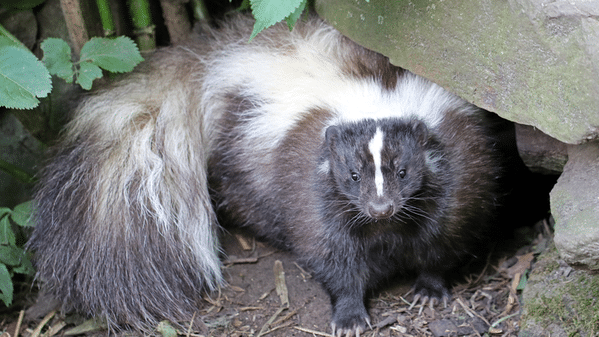World Rabies Day reminds Arkansans about prevention, control
ON 09-28-2022

Sept. 28, 2022
Randy Zellers
Assistant Chief of Communications
LITTLE ROCK — Each year since 2007, the Centers for Disease Control and Prevention joins with many agencies throughout the United States to increase awareness of rabies prevention and control. Rabies is rarely a source of concern for people in the United States thanks to vaccinations of domestic animals, but the disease still persists in wildlife populations and is occasionally reported in Arkansas.
As of Sept. 9, 2022, 17 cases of rabies have been confirmed in The Natural State this year. Skunks made up the largest component of animal carriers reported, with 13 animals testing positive. Three bats and one domestic dog have been reported with the disease so far this year. Between 24 and 46 cases have been confirmed each year in the last five years, and skunks are the primary animal found with the disease in Arkansas. Any mammal, including humans, can contract rabies but skunks and bats are the primary reservoirs for the disease in Arkansas. Domestic animal cases of rabies in Arkansas have not exceeded single digits per year in the last decade, thanks to vigilant surveillance and vaccination protocols.

Worldwide, more than 55,000 humans die of rabies each year, primarily in developing countries in Asia, Africa and Latin America. Ninety-nine percent (99%) of such cases result from bites inflicted by rabid dogs. In the United States, transmission from dogs is becoming a rarity due to successful dog vaccination programs.
Vaccinations are required for all dogs and cats in Arkansas, which helps prevent spillover from wildlife populations to humans. Any dog or cat 4 months or older must be vaccinated by a licensed veterinarian, and those vaccinations must be kept up to date to remain effective.
Dr. Jenn Ballard, state wildlife veterinarian with the Arkansas Game and Fish Commission, says prevalence of rabies virus in wildlife populations is extremely low, but it does still occur at a high enough rate to remain vigilant.
“Our likelihood of detecting the disease in bats and skunks that are behaving abnormally is significantly higher than with other wildlife,” Ballard said. “Skunks being seen out during the daytime and bats found crawling on the ground tend to get attention quickly, so they are often reported.”
Ballard says many positive cases are not accompanied by the excessive salivation or aggressive nature people commonly associate with the virus.
“More often, infected animals appear lethargic or unaware of their surroundings,” Ballard said. “Or they may not be as fearful of humans or pets as they should be. The best practice is to always keep your domestic animals vaccinated and enjoy wildlife from a distance.”
Rabies in humans is preventable as long as treatment is started before symptoms develop, so it is important for people to seek medical attention quickly after potential exposures. Anyone who is bitten by or comes into contact with an animal acting abnormally should contact their healthcare provider. Visit www.healthy.arkansas.gov/programs-services/topics/rabies for more information.
Recent News

Arkansas Wildlife Weekly Fishing Report
Apr. 18, 2024
Subscribe to Our Weekly Newsletter E-mails
Don’t miss another issue. Sign up now to receive the AGFC Wildlife Weekly Newsletter in your mailbox every Wednesday afternoon (Waterfowl Reports are published weekly during waterfowl season and periodically outside the season). Fishing Reports arrive on Thursdays. Fill in the following fields and hit submit. Thanks, and welcome!

